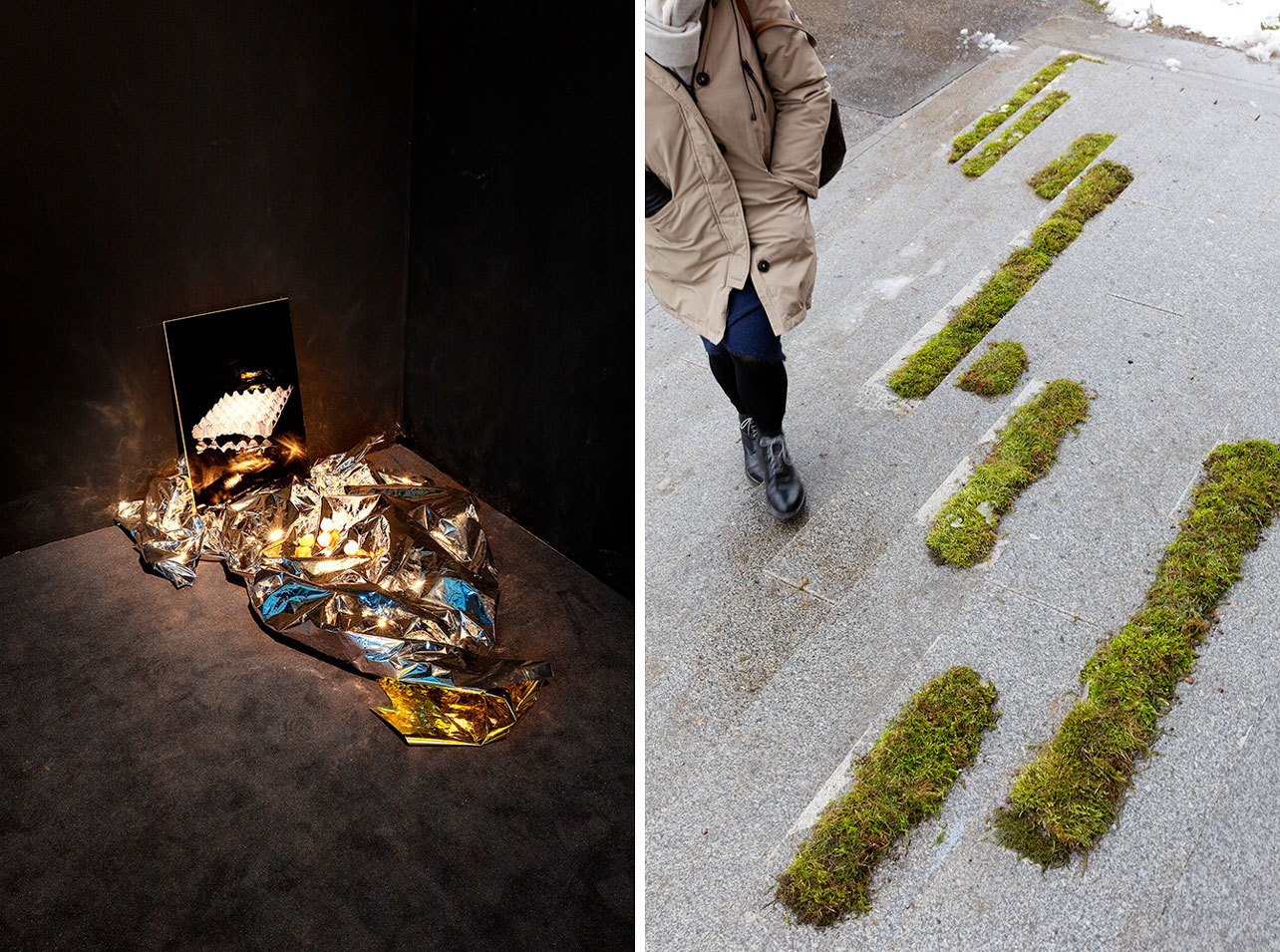ART-PRESENTATION: Petition
 In our today’s world nature is both constructed as an idea and threatened in reality. The contemplation of art is being shaped by our social, political and ecological conditions. What are artists doing in the face of the virulent climate change that threatens our planet? Is there still room for maneuver? And who is criticism addressed to? Questions like these are highlighted at the end of 2019 with a large group exhibition at the Salzburger Kunstverein.
In our today’s world nature is both constructed as an idea and threatened in reality. The contemplation of art is being shaped by our social, political and ecological conditions. What are artists doing in the face of the virulent climate change that threatens our planet? Is there still room for maneuver? And who is criticism addressed to? Questions like these are highlighted at the end of 2019 with a large group exhibition at the Salzburger Kunstverein.
By Dimitris Lempesis
Photo: Salzburger Kunstverein Archive
The exhibition “Petition” investigates artistic action as an interface to the world. Paul Spendier addresses the latter as something prosthetic. His robot combines technical and organic elements to create something familiar to everyone: the rustling of leaves. Gabriele Sturm stimulates action by showing a future different from the one emerging. The title of the exhibition “Petition” refers to her homonymous work, preceded by her campaign to preserve an inner-city public space. Sturm, often mediating between the near and the far, reveals correlations in a globality where everything we do has consequences. Precipitation and low temperatures produce snow: artificially produced, the white raw material threatens alpine ecosystems. Catherine Ludwig dedicates to the rare resource in present-day leisure collectors. Daniela Zeilinger’s directly exposed paper negatives “Alp #1-11” look like an afterimage behind closed eyelids. They display the verso sides of her mountain watercolours, re-creating a conceptual mountain as the model for myriads of possible summits. Borjana Ventzislavova’s rope jumpers in her video “Wahkohtowin” are entangled in an intimate tension with nature. Alluding to real social distortions, the artist has developed a magical vocabulary for the exorcism and healing of corruption, violence, and stupidity. An enigmatic force acts on the geometry of Matthias Krinzinger’s makeshift staircase in front of Salzburger Kunstverein. Soon after a brief ascent, “Stairway to Heaven” turns into a slippery slope and an unbridled plunge. Like a dystopian archaeologist, Luiza Margan collects fragments of a light dome from a modernist building in Split, which for ideological reasons is exposed to decay. For “Split Dioptre” she reconstructs the original concave forms of the plexiglass splinters: a poetic lens that captures our schizophrenic present—between denial of the past and neoliberal euphoria. Referring to the genre of the 17th and 18th Century painting, Maria Morschitzky creates a Conversation piece. It does not exchange favors, but rather transacts two opposing perceptions delivering a tug-of-war: “It’s alright! It’s a fight!”. Johannes Gierlinger’s 2009 photographs show Istanbul’s Gezi Park as one of the few green spaces left in the bustling metropolis. Four years later, in the midst of the blazing protests, the artist is shooting a film showing the park under a different guise: a symbol of resistance. The protests in Istanbul in 2013, which were directed against the policies of Erdoğan’s Islamic conservative government, stem from the planned removal of one of the last remaining green spaces in the metropolis. Starting from a community of solidarity from a wide variety of population groups, there is resistance from a number of major construction projects – including the city’s third airport, a number of nuclear power plants, and a number of dams. However, after its violent eviction by the police, it falls to Gezi Park to become a transnational symbol of the protest movement, which will soon spread to large parts of Turkey and – via diaspora communities – across national borders. The first photographic works by Johannes Gierlinger in the central park near the historic Taksim Square were made in 2009. The filmmaker and artist, who deals with history, memory and resistance in the form of essayistic works, shows the place impartially – just like he does to locals and offers visitors in the middle of the roaring city: a green, tree-covered area that promises shade and relaxation. “Gezi” means something like a walk and in the pictures of Gierlinger, who often takes the observing attitude of a seeking stroller, nothing points to the conflict that is supposed to flare up here four years later. However, the place attracts him – probably because of its calm, promising, regenerative quality. In 2013, amid the smoldering protests, Gierlinger visited Gezi Park again. His film recordings show the green space under different circumstances: as a symbol of resistance that not only wants to defend the directly endangered nature in the center of the city, but rather is directed against the underlying system of repression. There is much more to do than just clearing the park. After the protests dried up in the same year and the enraged crowd had to surrender to great victims, Gierlinger set out to film again in the park two years later. He is advised not to take any pictures, the police are omnipresent. The artist experiences a different park, neither an oasis nor a place of resistance and deserted like never before. Numerous participants in the protest, who previously lived in the area surrounding the Gezi Park, are moving to the Asian part of the city. The proximity to the place, which now has failure, is difficult to bear.
Info: Curator: Philippe Batka, The Salzburger Kunstverein, Künstlerhaus, Hellbrunner Straße 3, Salzburg, Duration: 4/12/19-26/1/20, Days & Hours: Tue-Sun 12:00-19:00, www.salzburger-kunstverein.at









